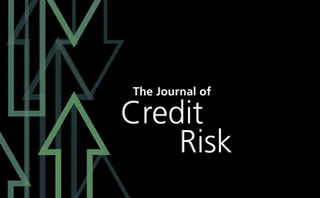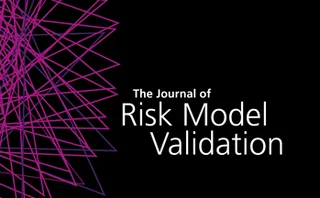Technical paper/Probability of default (PD)
Understanding and predicting systemic corporate distress: a machine-learning approach
The authors construct a machine-learning-based early-warning system to predict, one year in advance, risks of systemic distress and demonstrate factors which can predict corporate distress.
Quantification of model risk with an application to probability of default estimation and stress testing for a large corporate portfolio
This paper discusses the building of obligor-level rather than segment-level hazard rate corporate probability of default models for stress testing.
Modeling credit risk in the presence of central bank and government intervention
In this paper a simple approach for including central bank and government intervention in credit models is developed and illustrated using the Fed’s data for the CCAR 2021 stress test.
The loss optimization of loan recovery decision times using forecast cashflows
In this paper, a theoretical method is empirically illustrated in finding the best time to forsake a loan such that the overall credit loss is minimized.
A structural credit risk model based on purchase order information
This paper proposes a credit risk model based on purchase order information to address the deficiencies of monitoring methods that use only financial statements.
Bank-sourced transition matrixes: are banks’ internal credit risk estimates Markovian?
This study explores banks’ internal credit risk estimates and the associated banksourced transition matrixes.
Calibration of rating grades to point-in-time and through-the-cycle levels of probability of default
The paper argues for the need for and importance of the dual calibration of a probability of default (PD) model (ie, calibration to both point-in-time and through-the-cycle PD levels.)
Backtesting of a probability of default model in the point-in-time–through-the-cycle context
This paper presents a backtesting framework for a probability of default model, assuming that the latter is calibrated to both point-in-time and through-the-cycle levels.
Validation nightmare: the slotting approach under International Financial Reporting Standard 9
This paper makes an important contribution to the practice of validation by focusing on an under-researched area of the slotting approach to real estate specialized lending under the International Financial Reporting Standard 9 (IFRS 9) framework.
A framework to analyze the financial effects of climate change
Starting with an expert assessment of the climate risk factors over a specified horizon, then moving to a description of the expected number of climate events and the severity of the losses if an event occurs, the authors describe a framework to analyze…
Corporate default risk modeling under distressed economic and financial conditions in a developing economy
The authors create stepwise logistic regression models to predict the probability of default for private nonfinancial firms under distressed financial and economic conditions in a developing economy. Their main aim is to identify and interpret the…
IFRS 9 compliant economic adjustment of expected credit loss modeling
This paper presents an International Financial Reporting Standard 9 (IFRS 9) compliant solution related to expected credit loss modeling.
Two-factor Black-Karasinski pricing kernel
Analytic formulas for bond prices and forward rates are derived by expanding existing rate models
On probability of default and its relation to observed default frequency and a common factor
This paper considers a definition of through-the-cycle as independent from an economic state that can result in a time-varying TTC probability of default.
Validation of the backtesting process under the targeted review of internal models: practical recommendations for probability of default models
This paper provides practical recommendations for the validation of the backtesting process under the targeted review of internal models (TRIM).
On the mathematical modeling of point-in-time and through-the-cycle probability of default estimation/ validation
In this paper, the authors focus on PD estimation and validation. They provide the mathematical modeling for both point-in-time (PIT) and through-the-cycle (TTC) PD estimation, and discuss their relationship and application in our banking system.
A fifty-year retrospective on credit risk models, the Altman Z-score family of models and their applications to financial markets and managerial strategies
This paper reflects upon the evolution of the Altman family of bankruptcy prediction models, as well as their extensions and multiple applications in financial markets and managerial decision making.
Smoothing algorithms by constrained maximum likelihood: methodologies and implementations for Comprehensive Capital Analysis and Review stress testing and International Financial Reporting Standard 9 expected credit loss estimation
In this paper, the author proposes smoothing algorithms that are based on constrained maximum likelihood for rating-level PD and for rating migration probability.
Underperforming performance measures? A review of measures for loss given default models
This paper reviews the ways of measuring the performance of LGD models that have been previously used in the literature and also suggests some new measures.
Nonlinear relationships in a logistic model of default for a high-default installment portfolio
This paper uses data on consumer credit along with generalized additive models to analyze nonlinear relationships and their effect on predicting the probability of default in the context of consumer credit scoring.


